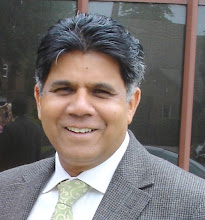We have looked at how the current model of organisation came about. We have also looked at how the model of rigid hierarchy, control and competition is no longer fit for purpose in our rapidly changing world. We can see the pressing need for a new evolution of organisation.
Now, back to the questions we posed at the end of the last post:
What will the organisation of the future be like?
What are the skills needed to effectively run these new kinds of organisations?
What will be possible with this new kind of organisation?
In addressing these questions there are two aspects to consider:
1. The People
2. The Organisation
In this Post we will deal with the people.
1. The People
This new kind of organisation will require a new kind of employee and a new kind of leadership.
Employees
The new kind of employee will be one who is creative, entrepreneurial and can think and act independently.
Autonomy is what liberates peoples’ creativity, gives them self-expression. It gives people a sense of ownership and responsibility.
But in the current paradigm, autonomy and ‘organisation’ are mutually exclusive: after all, how can someone be autonomous without causing havoc with the system?
In the new paradigm people will need to be trained in something we are calling Synergistic Autonomy: to think and act independently and decisively and yet be in sync with what the organisation as a whole is committed to.
Leadership
What kind of leader and what kind of leadership will this new future require?
We need leaders who can empower and lead autonomous, creative people.
These new leaders will be skilled at freeing people up so that they can perform; they will do this by creating new contexts.
Why new contexts?
Because everything is seen within a context. Peoples’ experiences and actions are determined by the context from which they view the situation. So alteration of context can powerfully alter performance.
What do we do with the people we already have?
Do we get rid of them and get a whole new team?
Or is there a way of transforming people so that they can be productive and fulfilled in this new organisation?
The good news is that most people have an inherent creative and entrepreneurial spirit. This spirit has long been suppressed, not just by the work place but also by our education and upbringing. We have learnt that the way to get through life safely is to conform. We do what others ask and avoid the risk of taking autonomous decisions for fear of failure and its consequences.
This spirit, while suppressed, is not dead. It is like a seed in the desert, starved of water and nourishment. Give it what it needs, and it will begin to grow and flourish. We will find that it is possible to take most people with us as we go along into this new future.
What is it that will bring this ‘seed in the desert’ to life?
One element is having a purpose, and working towards a vision or future that inspires.
Another element is having a working environment that nurtures and empowers one to fulfil on this future.
You may be saying “But my organisation has a great future/vision already; this doesn’t apply to me”.
It might be true that you have an inspiring future, but that is only one part of the picture.
If a future is not communicated effectively it is almost worthless.
Do you know if everyone is on board?
Are they related to it the way you are?
Does everyone even know about it?
What if you could communicate your organisation’s future in such a way that people are running to be a part of it?
Some good questions we could ask about our organisations futures and working environments are:
What are we as an organisation working on?
What is the future we are creating, the vision we are fulfilling?
Is this future/vision something that calls to me and others?
Can people find their own self expression and fulfilment in working towards realising this future?
Does the management encourage contribution and independence?
Is there a great ethos, team spirit and camaraderie present in the work place?
In the next Post we will address Organisation and Management inside the new paradigm.
Your comments and input are welcome.
Thursday, 6 August 2009
Subscribe to:
Post Comments (Atom)

This post highlights the questions faced by organizations for some time now and not necessarily for the new kind of organization. For example the alignment of the company's vision with the employee was always one of the key drivers a performing organization.
ReplyDelete